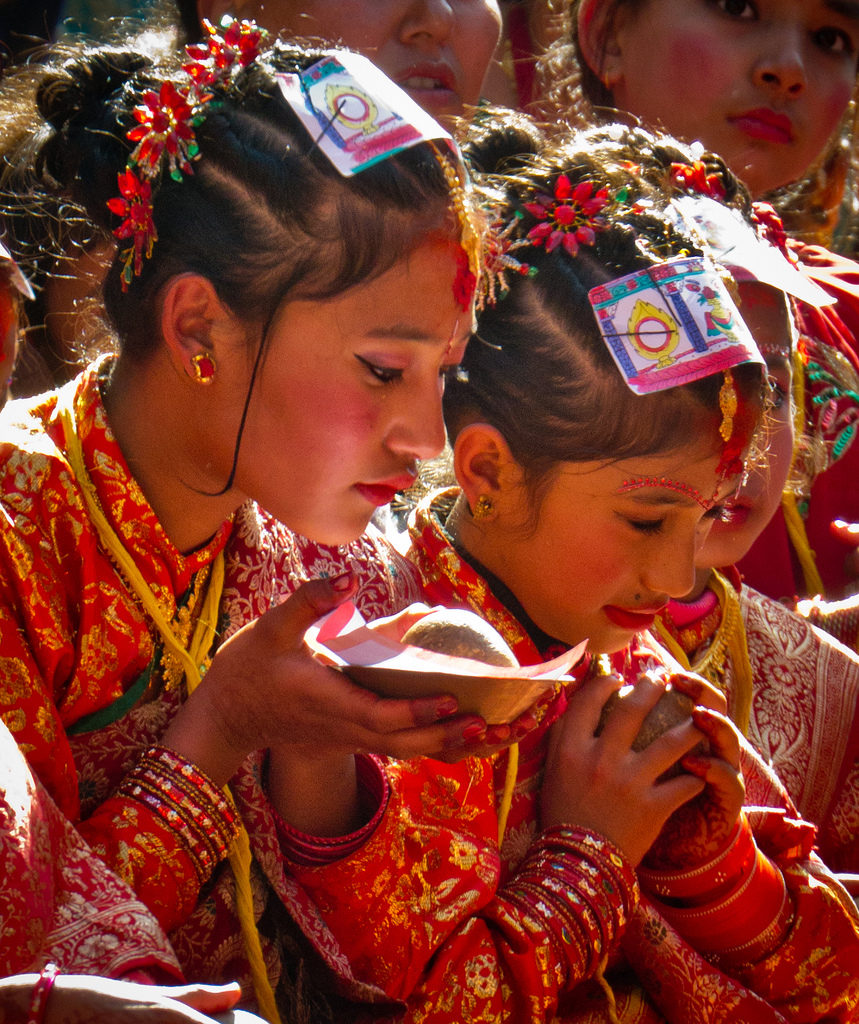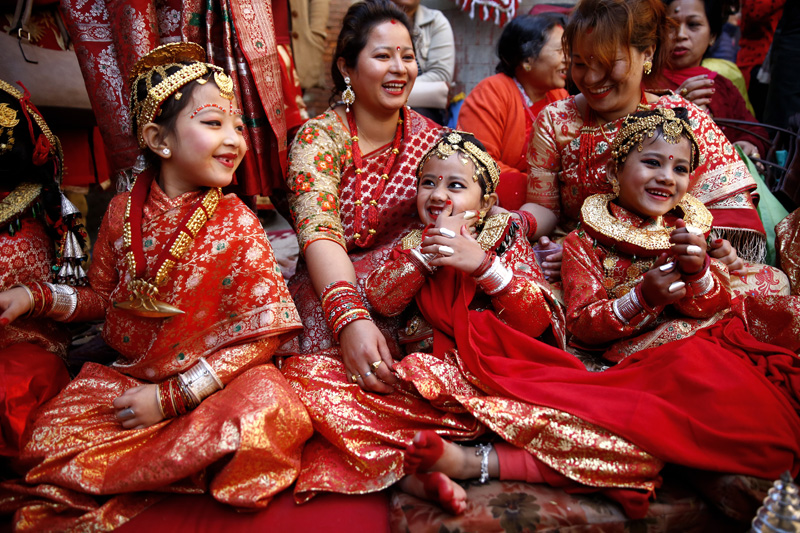The Gupha Ritual: A Nepalese Journey into Womanhood
Hello, lovely readers! I hope everyone is doing well. Over the past few months, every corner of India has been buzzing with various festivals and cultural celebrations. From Onam to Ganesh Chaturthi, and now upcoming Durga Puja and Navratri just around the corner, these festivities not only delight but also strengthen our cultural bonds.
However, amidst the celebrations, it's essential to acknowledge that some festivals and cultural practices inadvertently give rise to superstitions, leading people to engage in harmful customs due to religious beliefs. Today, I am here to narrate a captivating cultural heritage that will undoubtedly leave you surprised. So, let's dive in and uncover what's in store for us!
Nepal, a country embraced by the majestic Himalayas, is a place where centuries-old customs coexist with stunning landscapes. It's a nation where colorful lung-ta flags flutter in the wind, creating a tapestry of culture and spirituality. The fresh mountain air carries echoes of ancient legends. The culture of Nepal is a rich tapestry of practices, rituals, and beliefs deeply ingrained in the core of its diverse ethnic groups. Whether through the magical charm of Hinduism or the serene precepts of Buddhism, the religious fabric of Nepal envelops its inhabitants in a warm, comforting embrace.
This land is not only rich in culture but also home to diverse communities. The original inhabitants of the Kathmandu valley and its surroundings in Nepal, known as the Newar or Napami, have played a significant role in shaping its cultural heritage and civilization. Among the various cultural practices they observe, "Gupha" is a custom that requires revelation.
Gupha, also known as Surya Darshan, revolves around a girl reaching puberty and establishing a lifelong connection with the sun. It's a 12-day long ceremony that commences with a girl's first menstruation. During this period, she must stay in a secluded chamber with heavy curtains blocking the sun's rays.
Since the primary purpose of the ceremony is to ensure that the girl remains unseen by either males or the sun, great care is taken to prevent any sunlight from penetrating the chamber. As the duration of bleeding is ritually mandated for the first three days in Hindu culture, there's a belief that exposure to sunlight during this time can be particularly hazardous.
The room becomes a personal cocoon for her, where she discovers and learns about her own body. Gradually, with guidance from her female relatives, she acquires the customs of womanhood and receives instructions on how to navigate society. The community celebrates these rituals as the girl embarks on the journey of womanhood.
A small woollen doll, symbolizing the "Bahra Khyak" (ghost), is created and worshipped. Several significant individuals play crucial roles in completing this ritual. The girl's grandmother, mother, aunt, and martial uncle are the most important figures during the rite. The ceremony (Gupha) is performed differently based on the family. While most families confine their daughters to a dark room for 12 days, others do so for only 6 days. The ritual involves worshipping the "Bahra Khyak" since it is believed that the girl is temporarily possessed by this spirit. The head of the family shares meals every day with "Bahra Khyak."
The 12th day of the ceremony holds utmost significance. In preparation for the highly anticipated event, the girl is purified and adorned in a new red saree, along with red bangles and golden jewellery. She is allowed to leave the room, her head covered with a shawl, and is carefully escorted to the rooftop of her home.
This entire process is believed to eliminate the last bit of her menarche potency. Her mother removes the blanket after turning her to face the sun. She first observes the sun as it appears in a water basin placed in front of her. Then, in an unusual gesture, she crosses her fingers and peeks through them to catch a glimpse of the sun. Following this, the priest instructs her to take a seat on the floor, where various objects used in worship are arranged, including an idol or picture of the sun at its center.
She symbolically marries the sun by pouring a cleansing drink over its representation. The rationale behind this union with a pure entity is to safeguard her delicate young body and prevent any solar damage to her reproductive organs. The grandmother plays a significant role, throwing three handfuls of rice and wheat seeds over the girl. The martial uncle applies oil on her head after marking "Sindur" (vermilion) on her forehead.
The Gupha ceremony marks a transition for the girl. She leaves behind her old social rank and assumes a new role as the performer of the ritual. Once the ritual is complete, she is reintegrated into the community with a new set of responsibilities and a new status. An elaborate celebration is held to mark her reintegration, with both male and female members of the community in attendance.
At times, this ritual takes a tragic turn. While enduring the dark chamber for days, some girls find it difficult and dangerous. In unfortunate cases where a girl passes away during this time, she is buried in the basement of her home and is referred to as "Bara-si."
As a remarkable representation of history, culture, and the passage from girlhood to adulthood, the Gupha ritual in Nepal stands as a culmination. It is essential to appreciate these rituals' beauty while also critically assessing their influence and possible dangers as we immerse ourselves in the variety of festivals and celebrations practised across the world. With its complicated rituals and symbolic actions, the Gupha ceremony provides a remarkable window into the culture and beliefs that have formed generations. It calls us to recognise the subtleties of cultural history and the need to modify these customs to promote the welfare and empowerment of every person. We find the core of cultural change and the potential for advancement in this delicate balance between upholding our traditions and promoting progress.







Comments
Post a Comment